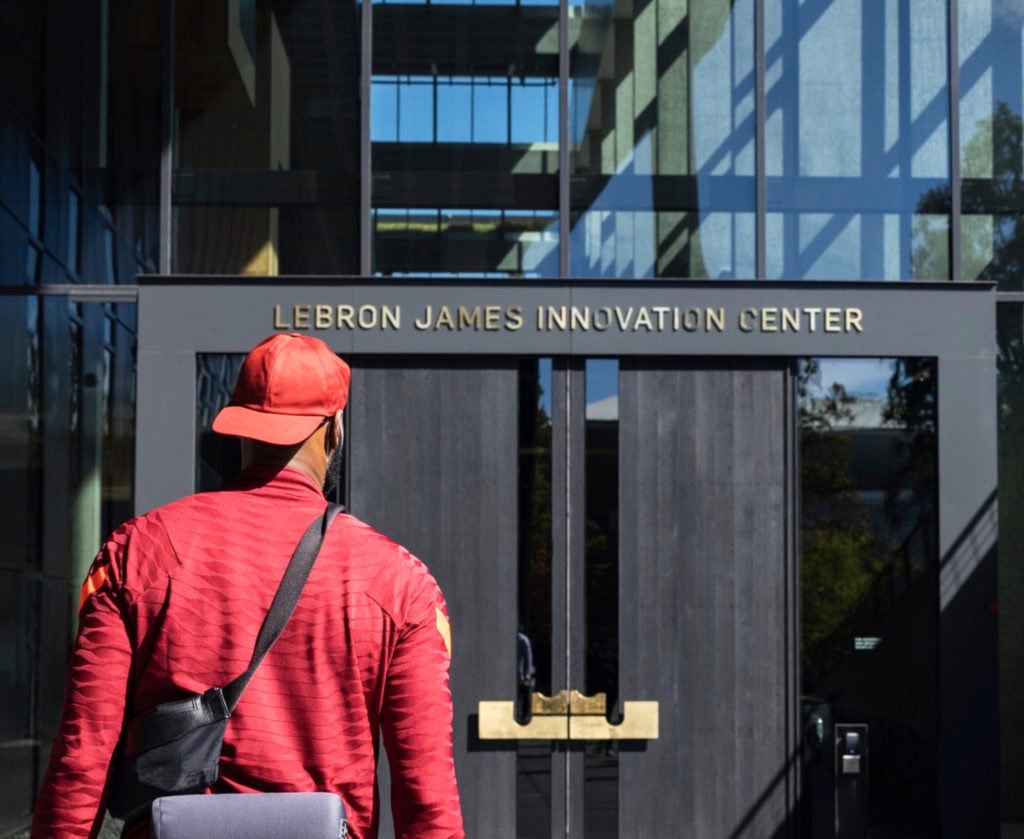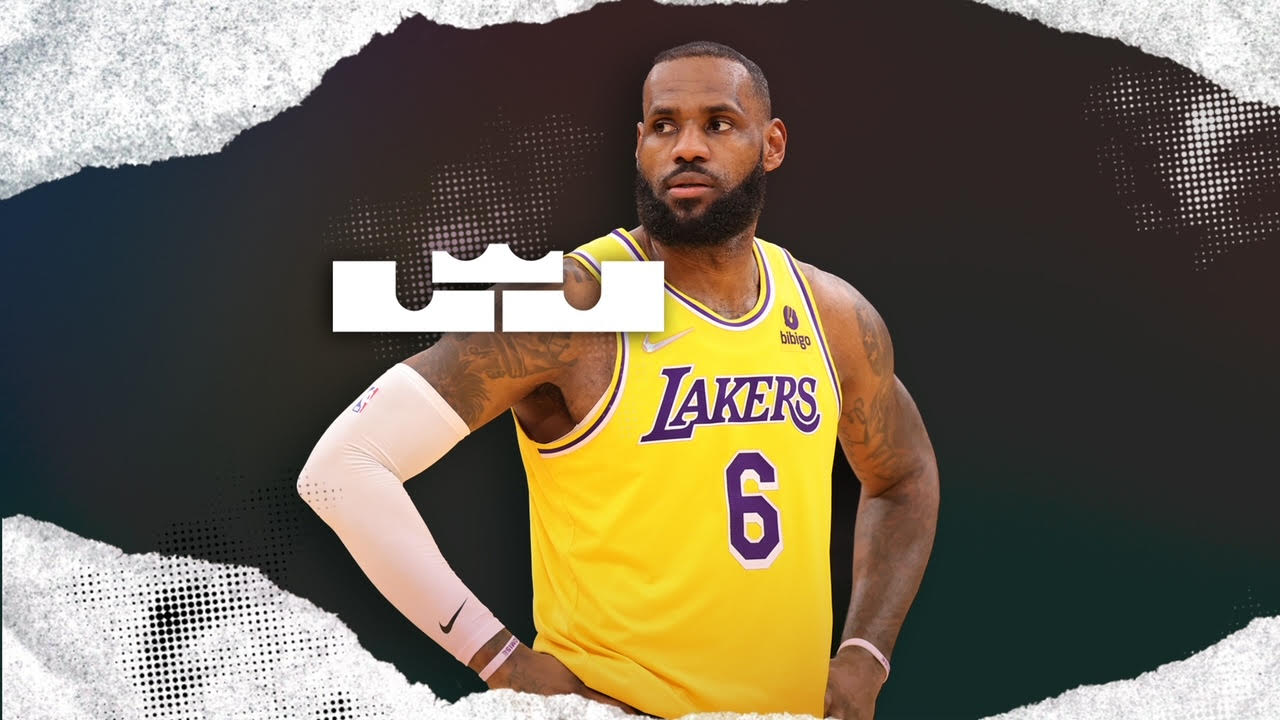
When LeBron James landed the richest rookie shoe deal in league history on this date in 2003 – a seven-year, $90 million pact – the signing set the stage for the entire athletic industry to have their radar up on the upcoming sneaker series from an 18-year-old “King James” that Nike was openly dubbing a future icon.
“We think he’s the athlete that will define the next generation,” a Nike executive said at the time.
As we know now, he was exactly right.
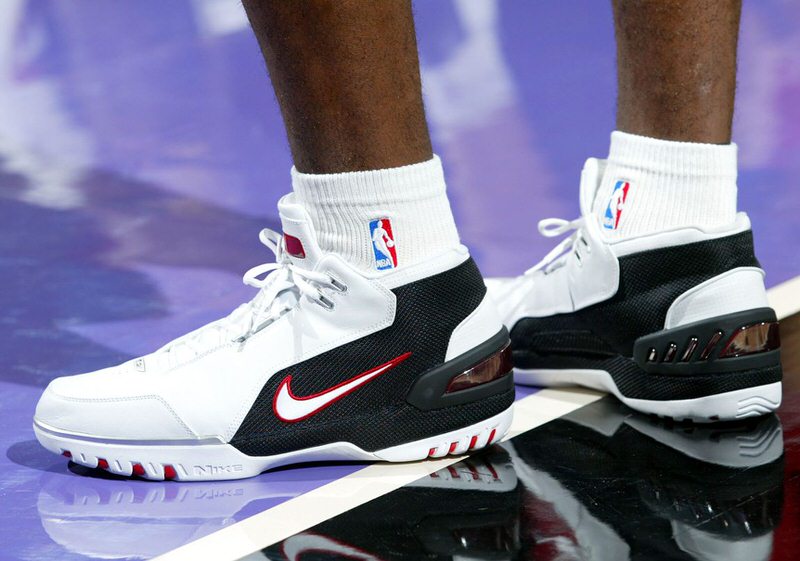
When he stepped onto the Arco Arena floor for his rookie debut game, LeBron became just the sixth player in league history to begin their career wearing their own signature shoe.
The Air Zoom Generation featured “LEBRON” text across the red tongue bar, a Hummer-inspired “NIKE” typeface along the midsole and unveiled his signature logo that would live on all footwear, apparel, and accessories throughout the life of the first Nike LeBron contract.
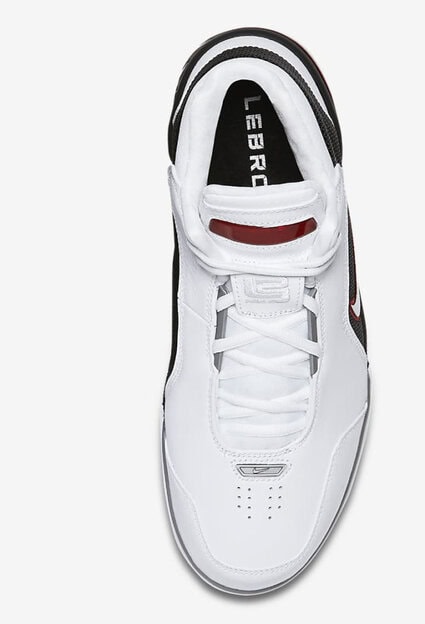
The “LJ23” logo embroidered along the tongue’s lace loop merged and blended his initials and jersey number into one block stamp.
While it became the logo associated with James throughout his first run in Cleveland, the design shifted and evolved during the spring and summer months of the development process.
Initially, a signature mark with subtle nods to the five-pronged Rolex crown logo was in play, drafting off of his “King James” nickname, and the aspirational tier of superstardom that he was soon embarking on as a teen phenom.
Playing into the luxury watchmaker’s former brand slogan, “A Crown for Every Achievement,” James eventually gifted Phil Knight a vintage Rolex from 1972 – the same year Nike was founded – as a token of his appreciation for investing so much into him as he made the prep-to-pro leap.
“With thanks for taking a chance on me,” James had inscribed on the backside.
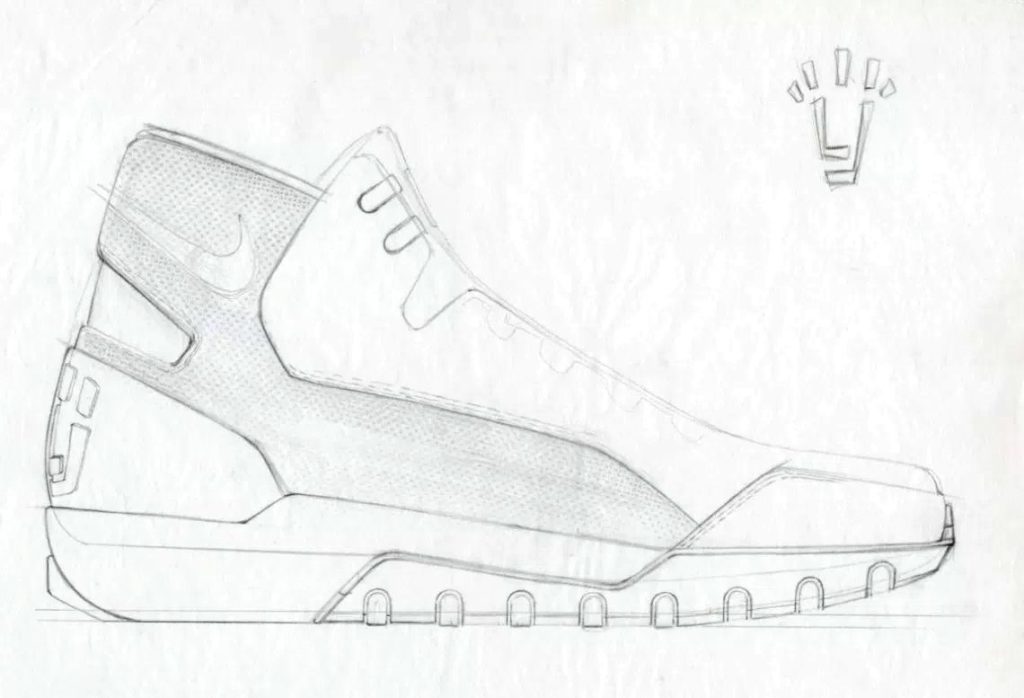
The potential five-pronged crown logo originally stemmed from the brand’s rooting interest in James possibly wearing No. 5 as his NBA jersey number. Nike’s thinking was that the number wasn’t entirely associated with one iconic player yet, and that they could build layers of storytelling around the number in future marketing campaigns.
James’ game was projected to be a masterful blend of Michael’s scoring and Magic’s playmaking – and each player’s jersey number combined to make five. His all-around ability could also represent all five positions on the floor, so the lofty thinking went, as a generational talent that would go on to define the game for the sport’s next century if all went according to plan.
Sample sketches of the first Nike LeBron shoe even featured five stitch lines across the midfoot panel, that eventually were removed.
As it turned out, he simply chose to continue wearing No. 23, as he had in high school as a tribute to MJ.
So, LeBron’s first signature Nike logo incorporated that number.
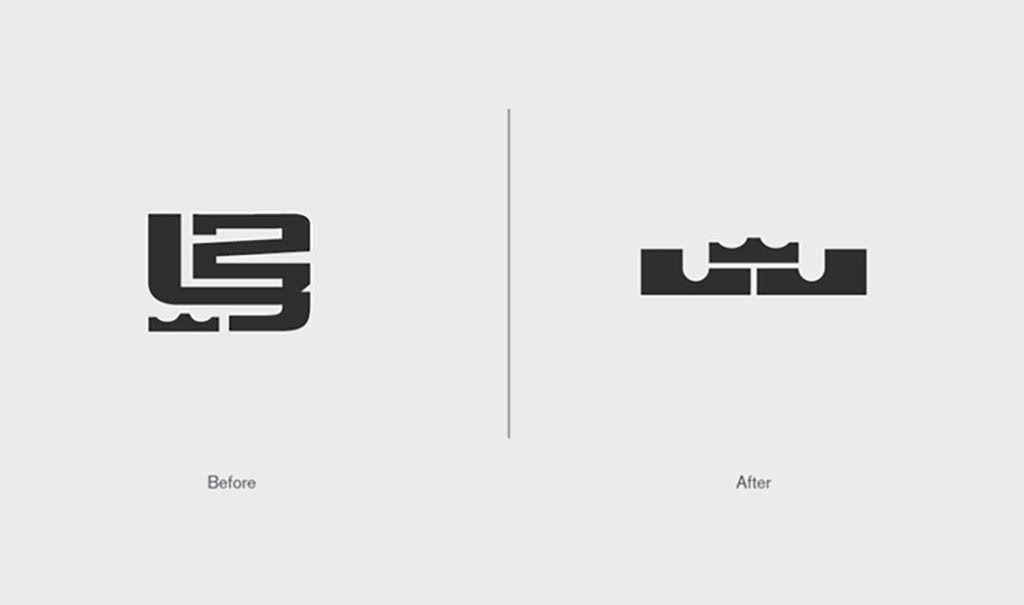
When James famously took his talents to South Beach in 2010, that presented a problem for Nike. He would no longer be wearing No. 23, as his newest franchise had already infamously retired that number (ironically, also as a tribute to Michael Jordan).
“With his move to the Miami Heat and subsequent uniform number change, LeBron James’ brand mark was no longer viable and required an update,” said Darrin Crescenzi, former lead designer within Nike’s Brand Design group, helmed with crafting logos and typefaces for all of Nike’s leading athletes and assets.
While switching teams may have forced James’ hand to pick a new number, he had actually planned to switch out of No. 23 regardless and had already filed paperwork by the league’s March deadline during the spring of 2010 to get the process underway, were he to return to Cleveland.
“If you see 23, you think about Michael Jordan,” James told ESPN’s Brian Windhorst at the time.
He landed on No. 6, his Olympic jersey number.
“My second-favorite player was Julius Erving, and he wore No. 6,” James explained at the time. “I wore 32 in high school because Dr. J wore it at first. My first child was born on Oct. 6. It’s my Olympic number. My second child was born in June.”
Once James’ numeric shift was made official in July of 2010, Nike got to work once more.

“My brief was to begin with the simple, iconic crown from within the existing logo, and evolve it to be more memorable and representative of the man,” outlined Crescenzi.
Under the guidance of Nike Brand Design Creative Director David Creech, Crescenzi began conceiving a series of potential logo revisions that would live across all product silos and marketing materials for the then-cemented global icon, who was now 25 years old upon signing with the Heat.
“The result blends the crown with LeBron’s initials, and subtle visual references to a basketball court in the negative space,” detailed Crescenzi, who layered in an arc found atop a basketball court’s key into each letter of the reflected, symmetrical design.
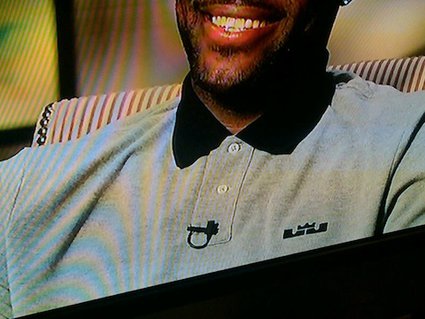
While the “LJ23” logo was featured across the Zoom Generation, LeBron 2 through 7 models, and his Zoom Soldier series, his first signature shoe in Miami, the LeBron 8, was noticeably missing it.
Instead, Nike utilized his written signature on the heel and a lion graphic atop the tongue of the 8, which launched in the instant classic “South Beach” colorway of black, teal, and pink.
While it took a year before the logo would be incorporated onto his sneakers, LeBron debuted the new logo on a polo shirt donned during a Thanksgiving Day interview with NBC in 2010, nearly five months after landing with the Heat. A shoddy camera phone shot of the TV interview became the logo’s viral reveal image during the early era of Twitter.
“We are really pleased that it incorporates LeBron’s initials ‘L’ and ‘J’ and retains the crown from his previous iconic logo,” a Nike spokesperson confirmed to Darren Rovell at the time.
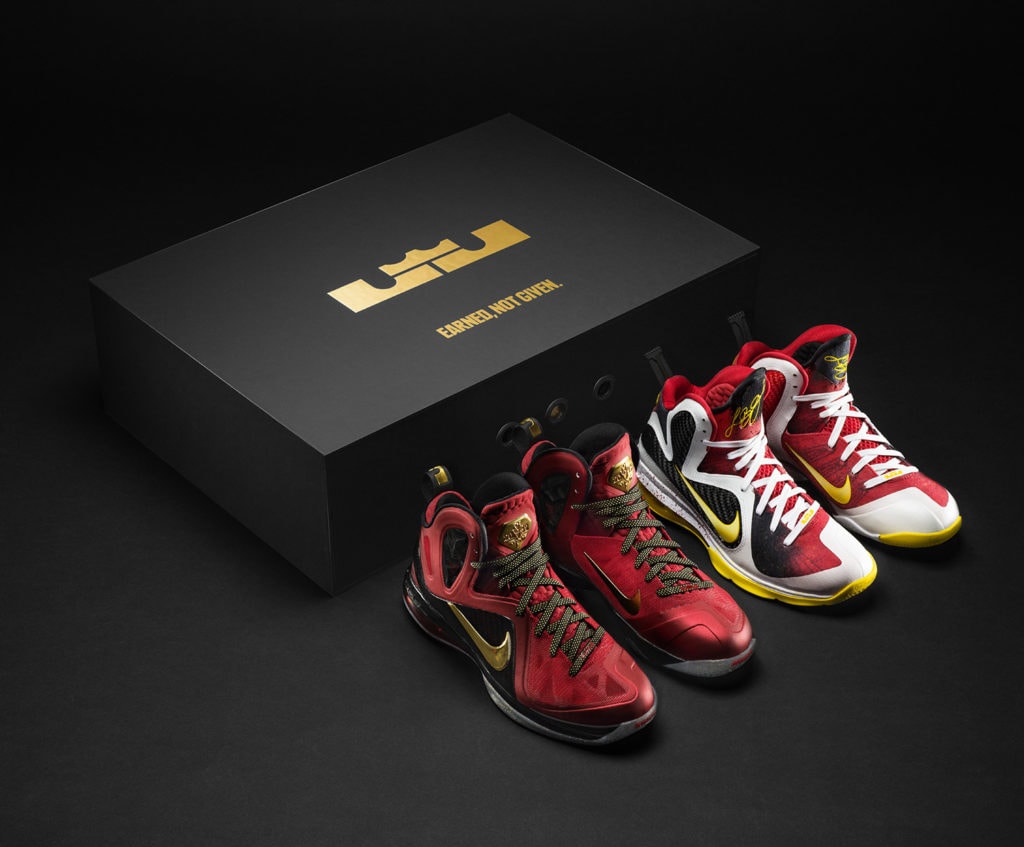
The following year, the Nike LeBron 9 became the first sneaker to include his new “LJ crown” mark during the fall of 2011, with footwear designer Jason Petrie placing it along the heel and laces.

It would be the model worn by James when winning his very first championship, and was proudly highlighted on the commemorative box of his two-shoe LeBron 9 and LeBron 9 Elite “Championship Pack” that celebrated the first of his four titles.
Though James eventually landed back in Cleveland in 2014 in a No. 23 jersey and later signed with the Lakers in 2018, continuing to wear No. 23 during his first three seasons in LA, Nike has kept the revised crown logo as his key primary signature mark ever since.
“The new LeBron logo has served LeBron well now since 2010, being re-interpreted each season across different Nike products,” framed Crescenzi.
As it turned out, James unquestionably lived up to the hype and anticipation of his first Nike deal, with the contract extended ahead of its 2010 expiration and later converted to a “Lifetime Deal” in 2015.
Last fall, Nike officially opened The LeBron James Innovation Center, an 84,000 square foot home to its enormous research and development operation and the new location of the company’s fabled “Innovation Kitchen.”
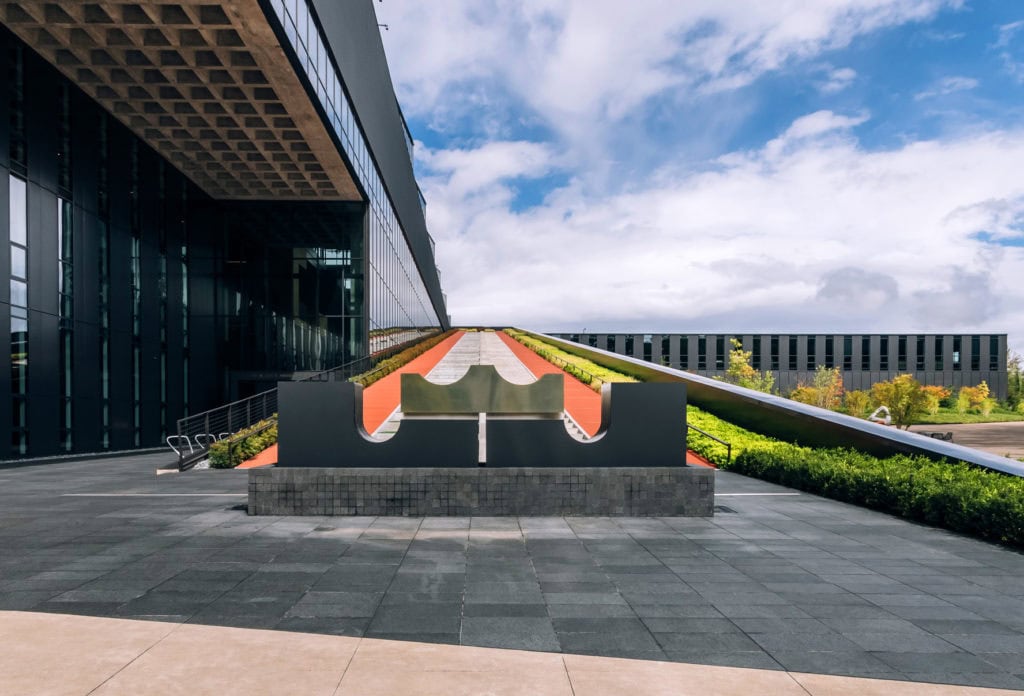
Fittingly, and fueled by Mike’s inspiration, he’s the first basketball athlete to receive a building named in his honor on the Nike “campus” since Jordan.
As James, his family, and his closest childhood friends all toured the new “LeBron Center” together for the first time, they were greeted by a towering “LJ crown” logo upon arriving, perched in front of the 500-foot long, 15% incline hill that athletes and employees alike train on. The names of each and every family member and friend are inscribed along the outer panels of the logo sculpture.
Not long after, James and the accompanying group each made their way to the four-floor building’s entrance, where each half of his signature brand logo now serves as the door handles, welcoming visitors for decades to come into the once-projected, now cemented, global icon’s legacy imprint at the Nike World Headquarters.
